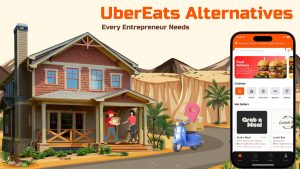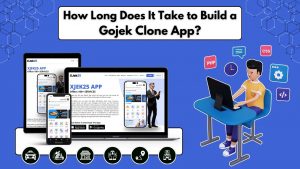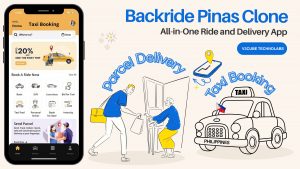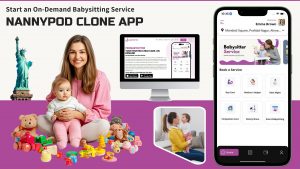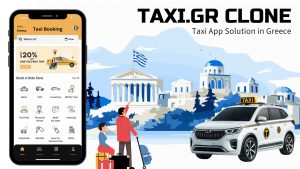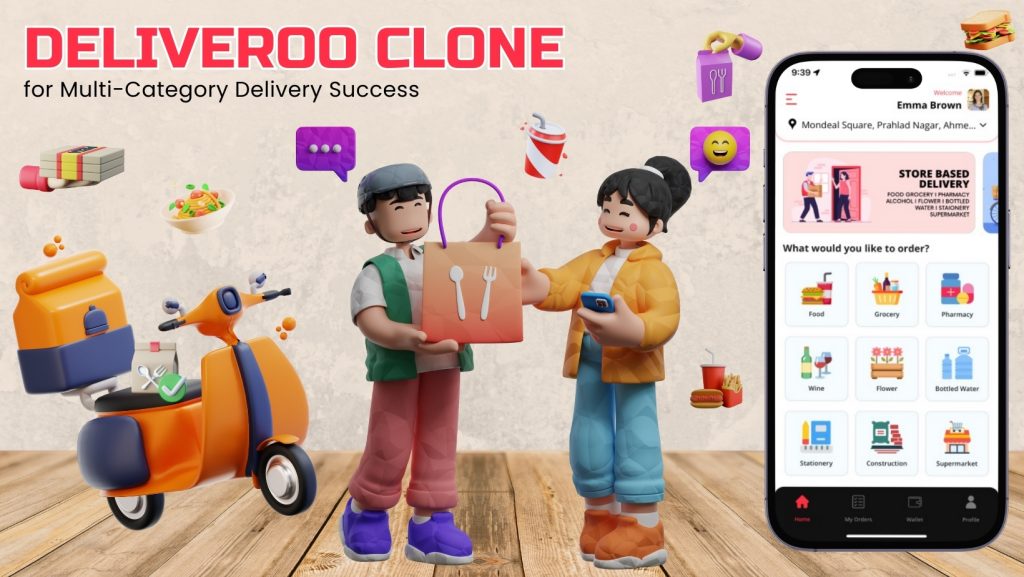
You’re thinking bigger this time, not just pizzas and burgers, but groceries, gifts, medicine, maybe even a parcel or two when needed. A multi category delivery biz sounds like a next level hustle. The good news? You can totally route your way there with a Deliveroo style white label app, and yes, in just 1 to 2 weeks. Wild? Maybe. Possible? Absolutely. Let’s meander through how that might actually go, with all the real talk included.
What even is a multi category Deliveroo clone?
Alright, let’s unbox this. A Deliveroo clone doesn’t have to be about food. Imagine a modular, ready made app platform that supports multiple product categories, restaurants, grocery stores, pharmacies, flower shops, laundry services, you name it. It’s like the “super app” vibe but trimmed to your level.
Providers like Marat cart offer platforms covering … well, just about 50+ on demand service categories, from groceries and logistics to ride hailing and more. Then there are Postmates style clones that let you set up shop offering food, groceries, pharmacy deliveries, and beyond. It’s multi service magic, all in one package.
Is launching this in 1–2 weeks still realistic?
Heck yeah, as long as you’re cool starting small and iterating fast. These clone apps already come with the heavy lifting done. You basically tune in your brand colours, connect maps/payments, and throw in your categories. Then do a few trial runs, iron out kinks, and push it live.
Yes, you’ll need a tiny buffer for app store approvals or small tweaks, but overall, a fortnight can still get the job done. The faster you launch, the quicker you can snag local merchants and riders before others do.
Why a multi category app is a smart move right now
Food delivery is great… but what about those midday pill runs or gifting emergencies? A multi category platform meets people where they are, one tap and they can get dinner, medicine, flowers, or even a last minute gift delivered.
These apps become part of life, not just dinner. That means better retention, more engagement, and, pretty important, multiple revenue streams: commissions from vendors, delivery fees, promo placements, maybe even membership perks or ads.
What you’ll need on your 14 day checklist
Here’s your quick checklist to launch this super app lifestyle in just two weeks:
- Pick a solid multi category clone provider. Marat cart, Postmates clones, and others, just pick one that supports what you want.
- Define your categories. Maybe groceries, pharmacy, flowers to begin with.
- Branding basics. Logo, names, colour vibe, make it feel like your app.
- Vendor on boarding. Get a few stores or service providers per category. Even 2–3 to start works.
- Payment gateway setup. Cards, mobile wallets, COD, whatever fits your region.
- Delivery people. A few riders ready to roll as soon as you flip the switch.
- Technical testing. Do dummy orders across categories. Test tracking, chat, notifications.
- Launch. Soft launch to a small area, then slowly open wider.
Some things to watch out for
Even though you’re going fast, don’t let shortcuts compromise quality:
- Too generic? Make sure your app doesn’t look like twenty others. Inject personality, maybe add local slang in app messages or highlight neighbourhood shops.
- Load issues. Multi category means different workflows; ask your provider if the system scales smoothly.
- Legal & code access. Ideally, get white labeled code, not a rented system without ownership.
- App store delays. These can sneak up, give yourself some cushion just in case.
Inspiration from real life super apps
Take Gojek in Southeast Asia, it began as ride hailing, then branched out to GoFood, GoSend, GoMart… the whole kitchen sink of services, and now it’s massive .
Or Swiggy in India, which originally focused on food, then quietly slid in Swiggy Go for parcels, Swiggy Instamart for groceries, and pharmacy deliveries with Pharm Easy.
These big names show that multi category is not just a “nice to have”, it’s a ticket to stickiness and smoother scaling.
What users want, according to the streets
Let’s get real, developers and entrepreneurs on Reddit have tried similar setups:
“The top notch Dunzo clone facilitates on time delivery of food items, groceries, medicines, fruits, and vegetables … includes real time tracking … referral codes … multiple payment methods”.
People dig the convenience of one app that handles multiple categories. That flexibility is what turns a delivery app into part of a user’s everyday toolkit.
Adding your own twist to stand out
Ok now, you’ve launched your multi category app. Here’s how to make it yours, not just “another clone”:
- Feature local heroes. Maybe your local grocery store, grandma’s bakery, herbal shop. Make it about your community.
- Smart promos. First delivery discounts, or freebies with combined orders across categories (e.g., groceries + flowers).
- Great rider experience. Happy riders = better service. Clear pay, good support, maybe small rewards.
- Support that feels human. Quick WhatsApp responses, real phone numbers, not generic chatter bot replies.
- Progress slowly. Don’t drown yourself in too many categories; start with 2–3, get smooth, then add more.
What comes after your first fourteen days
Your app is live, cool. Now:
- Absorb feedback. From customers, riders, vendors, every little glitch is a goldmine for improvement.
- Improve iteratively. Add filters, search by category, scheduled deliveries for pharmacy, maybe promos based on user behaviours.
- Scale responsibly. Once 50 orders a day is manageable, add more merchants.
- Plan bigger. Maybe integrate AI powered recommendations, dynamic pricing, or subscription models, when time and money align.
A friendly reminder before you leap in
Yes, launching a multi category delivery business in just one to two weeks sounds like a sprint, and it kinda is. But with the right clone script, small scale ambition, and real world hustle, it’s totally within reach. You’ll hear “it’s too big,” “it’s too fast,” but hey, those big players like Gojek and Swiggy started small too. Your small might just look big to your neighbourhood. So go ahead, bring the groceries, the meds, the gifts, all in one hot drop platform, two weeks from now could look a lot like something that feels real, personal, and yours.
